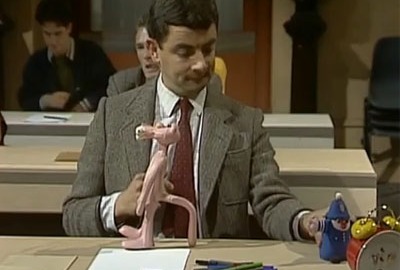Isn’t it about time that we learnt a little bit more from our Nordic friends over in Finland as regards educating students? After all, their academic success has drawn a great amount of attention from all over the world. For over a decade we have repeatedly heard how Finland consistently scores highly in PISA tests, despite (or should I say in spite of) giving little (if any homework), having students starting school at a later age than many other countries do (see a previous blog on ‘Too much, too soon…..), allowing more breaks in the school day for students and giving few (if any) mandatory tests until a single exam at the end of high school – summarised here in a ‘HuffPost Parents’ video for U.S. parents.
So what have we done about it in England? Erm….., well….., nothing! Well, I say nothing. What I mean is that we have insisted that students do more homework (despite their being very little evidence that this is actually beneficial whatsoever) and we have increased the amount of formal testing. Indeed, in May 2016, children in Year Two and Year Six (in England) will be the first to take the new SATs papers. These tests in English and maths will reflect the new national curriculum, and are intended to be more rigorous. There will also be a completely new marking scheme to replace the existing national curriculum levels. At the end of Year Six, children will sit tests in: (a) reading, (b) maths and (c) spelling, punctuation and grammar. These tests will be both set and marked externally, and the results will be used to measure the school’s performance (for example, through reporting to Ofsted and published league tables). Childrens’ marks will be used in conjunction with teacher assessment to give a broader picture of their attainment. This coincides with GCSE and A Level reform to make exams more rigorous and challenging. Fair enough. However, there is a huge presumption here; that harder tests improve standards. This is a fallacy. When will we learn?
There is also a deeper, more holistic issue too. In this country, and indeed in many others, we still educate students in subject ‘batches‘ and by age group. Our Victorian production-line education system is still at large; a ‘one size fits all model’ designed for the purpose of uniformity, conformity and standardisation. It has virtually not changed in over two-hundred years. It was ultimately designed to produce workers for the work force at the time, but it has not evolved enough, if at all, to meet the needs of the 21st century, as explained by Sir Ken Robinson in his talk on ‘Changing education paradigms’.
So what can we learn from Finland then? What have they got right? Here are my top 5 in order of importance (most important one first):
(1) Teachers in Finland are clever. They have at least two degrees – one being a master’s degree. Only first class honour’s degrees are acceptable, such is the competition for places at one of the six national teaching colleges. Ultimately, they are subject specialists. I am simply not convinced that teachers in England are that clever – this was the subject of a previous blog: ‘Are teachers academically clever?’ Unfortunately, this is due to a vicious circle in this country regarding recruiting teachers. In Finland there is no teacher shortage; the profession is much more respected than it is in England (and the rest of the U.K.), it is a far less stressful job and pay is good. In stark contrast in this country we have a ‘Ticking time bomb’ when it comes to teacher recruitment – indeed, in a rare show of unity, the six teachers’ unions have joined together (18.01.16) to warn about a developing crisis in the teaching profession and to address just how to solve the teacher shortage in England.
(2) Teachers in Finland have time to plan and mark, not just teach. In Finland teachers teach less. A main scale teacher in Finland might only teach four hours of the school day, spending at least two hours on building curriculums and assessing student progress. In contrast, in England a main scale subject teacher will be teaching between five and six hours a day. This has been the main issue I have wanted teaching unions in this county to be addressing for over ten years now. Teachers simply teach too much! Especially NQTs (newly qualified teachers) and RQTs (recently qualified teachers). Just one extra one hour lesson a day is one extra lesson to plan for and mark for, and there might be thirty students in that class. From my own personal experience, as I gained more senior positions within schools the teaching side of the job became much more manageable. I would have between two and three hours of lessons a day. I could plan for these comfortably and mark student work every day if necessary so students got immediate feedback for their very next lesson. Very powerful indeed in terms of teaching and learning. I never even took marking home! The students in my classes certainly got the best out of me as I was fresh and ‘on top of my game’ for every lesson. In stark contrast, a NQT would be drowning under the workload of five lessons a day with all of the planning and marking that comes with that! Surely teachers need to be teaching less, especially in the early parts of their career?
(3) Finland has a vocational education system that works well alongside it’s traditional academic one. Forty-three percent of Finnish students attend vocational schools. At the age of sixteen, students can decide if they want to attend the Finnish equivalent of high school to prepare them for university or enter vocational training. Students who attend vocational school can attend a university provided they score high enough in the matriculation exam. Preparation for employment and careers guidance in schools are good. Low rates of youth unemployment in countries such as Germany, Switzerland and Finland correlate with these countries having very good vocational training systems in place. In contrast, in England the current vocational system is at best confusing and ill-defined; this has been the case for the past fifty years! Our view of vocational training has quite simply been ‘dumbed-downed courses for the disaffected and low-ability’.
“Vocational options for teenagers should be much better so the talents of non-academic pupils are not wasted….. The education system in England does not offer enough opportunities for those who do not succeed at GCSE….. Better vocational training would reduce youth unemployment…. We simply have to improve the quality of our technical provision”.
Sir Michael Wilshaw, Head of Ofsted (2016)
(4) Finland promotes multilingual studies. Finnish language education begins on the first day of school. By age nine students begin Swedish (Finland’s second official language) and at eleven they start learning a third language, usually English. Many students take on a fourth language at the age of thirteen. Students are tested on their first two languages in a matriculation exam for university placement. The benefits of learning languages from a biological perspective are huge. Learning makes connections between brain neurons; the cleverer you are the more connections you have. It’s not the actual number of neurons you have that is important, as these do not divide, but the number of connections between them that is important. So, a younger person has more neurons than an older person (as neurons die throughout life), but the older person may be cleverer as they have more connections between the neurons as they have learnt things throughout their life. When we are babies we have all the brain neurons that we’ll ever need, but we have very few connection between them so we are not as clever as a teenager who has less neurons. However, we learn to communicate through language and the number of connections increases exponentially – we learn a new language from scratch in four years or so at this age. This is the power of language on neuronal connections. It is no coincidence that multilingual people are supremely clever. In this county we are somewhat lazy as our first (and normally only) language is English, which just so happens to be the language of business. There is no great need to learn other languages. This is a huge problem both biologically, as highlighted above, and culturally. As well as making you more clever, learning languages increases global understanding, improves employment potential, increases native language ability, sharpens cognitive and life skills, and makes travel more feasible and enjoyable. Yet in this county it is massively undervalued. We only have to look at football players and managers; those who are foreign and who are playing or managing in the English Premier League can speak several languages in press conferences and learn English (pretty well), in stark contrast to English players (such as Joey Barton) and managers (such as Steve McClaren) who have played and managed abroad.
(5) Finland recognizes the importance of socialising. Our view on teaching and learning is (still) that if students aren’t in classrooms for lessons then they aren’t learning. This hasn’t changed for two-hundred years or so. Breaks in between lessons in England are non-existent, meaning that as one lesson ends the other one is starting! Mid-morning breaks are generally only long enough for the quickest of toilet breaks before lessons resume. Lunch hours are not an hour; they are generally thirty to forty minutes long. My own personal view on this has been that I have never been surprised why students talk in class (the biggest low level behaviour issue in schools in this country) or why they ‘act up’ when we have restricted their socialising so severely. Ultimately, we then lose countless hours of lesson time dealing with the consequences of this which ultimately impacts on learning. In Finland, students have seventy-five minutes of playtime a day (and I love the fact that this is the name given to it). There are small breaks between lessons too (not just beneficial to students but for staff too to get organised). Outdoor physical activity is encouraged and lessons taught outside as often as possible – even in Winter. The value of ‘play’ is valued far more in their society and culture, right from the grass roots level. Finland heavily subsidises daycare for children for this very reason, with children starting school later (at age seven) than they do here in England. Although ninety-seven percent of children attend pre-school, which starts at age five, the emphasis is on playing and socialising, which is not necessarily the case in England (from my own experience of having a four year old pre-school boy).
There are other aspects of the Finnish education system that are worth noting; ones that didn’t make it into my ‘top five’. In Finland, teachers are given guidelines for what they have to teach, but they are not given prescriptions for how to teach it. This allows highly trained teachers to develop a curriculum geared toward teaching their unique group of students. The average class size in Finland is twenty and there is no tracking or separation of students on ability. There is also no homework or testing until the ‘big test’ at the end of high school. Teaching assistants (though they not called that in Finland) are far more trained than they are in England and support groups of students far better than they do in U.K. school, in my humble opinion.
Clearly we have a lot to learn, but maybe the biggest problem is our own mindset. We have had lots of reform in the past three years, but have we been reforming the right things? We have reformed examined content ultimately. As much as is humanly possible. But have we reformed anything to do with actual schools? Have we reformed teacher recruitment, teacher pay, vocational education, the school day? Erm…. well …. no! Maybe we’ll just keep talking about Finland then without actually doing anything about it. I wonder…..







